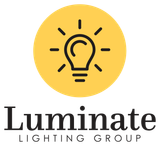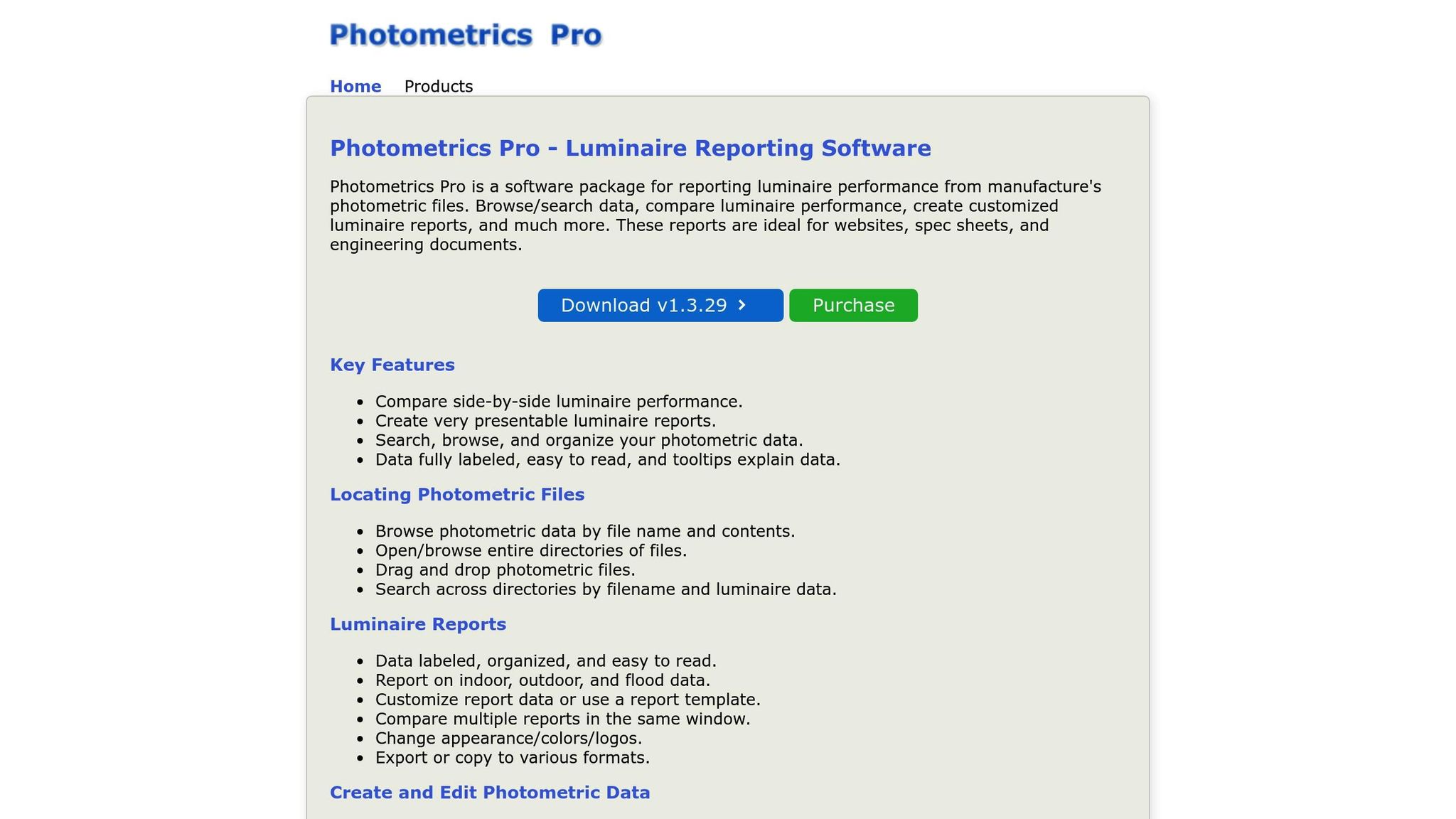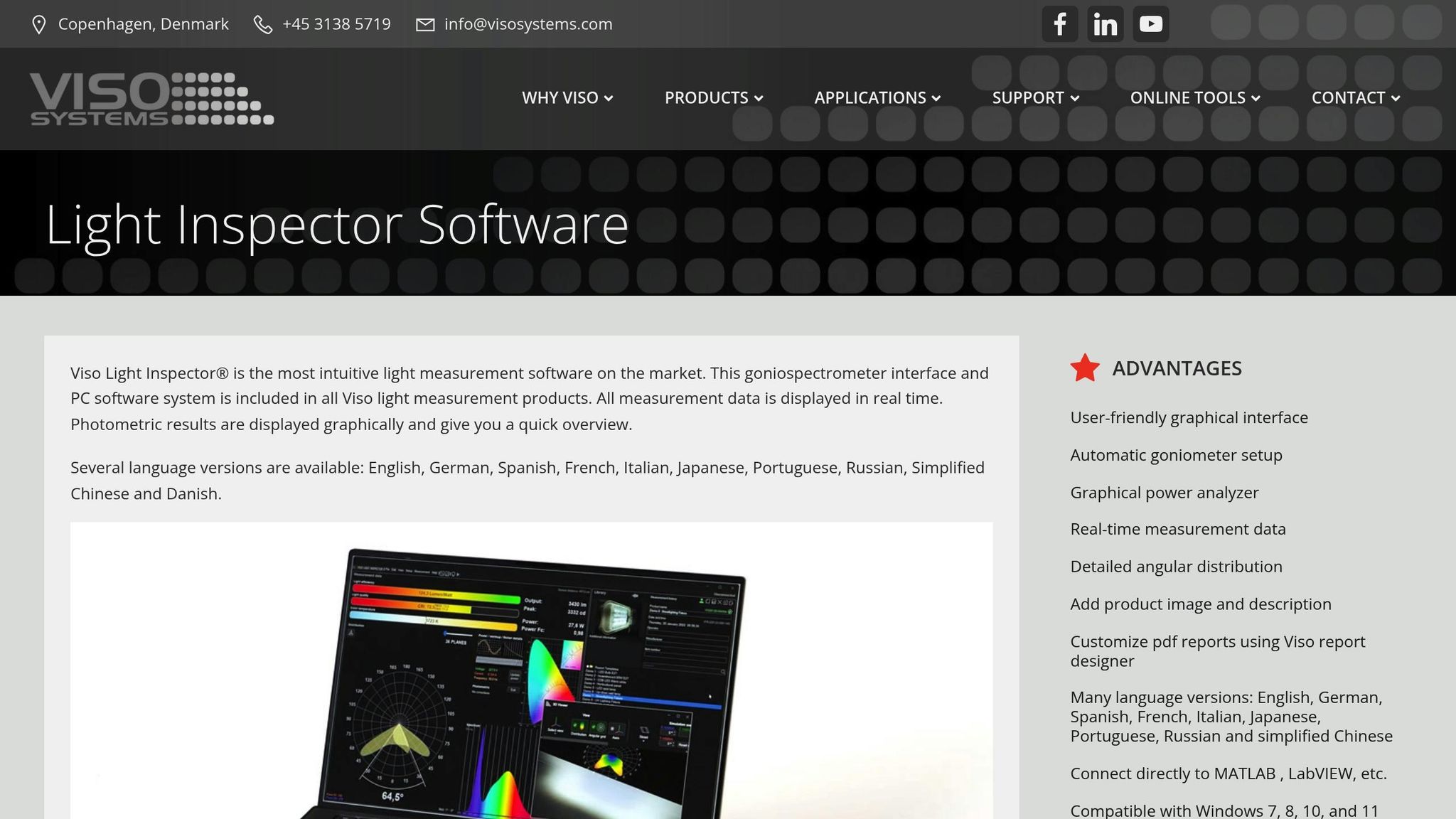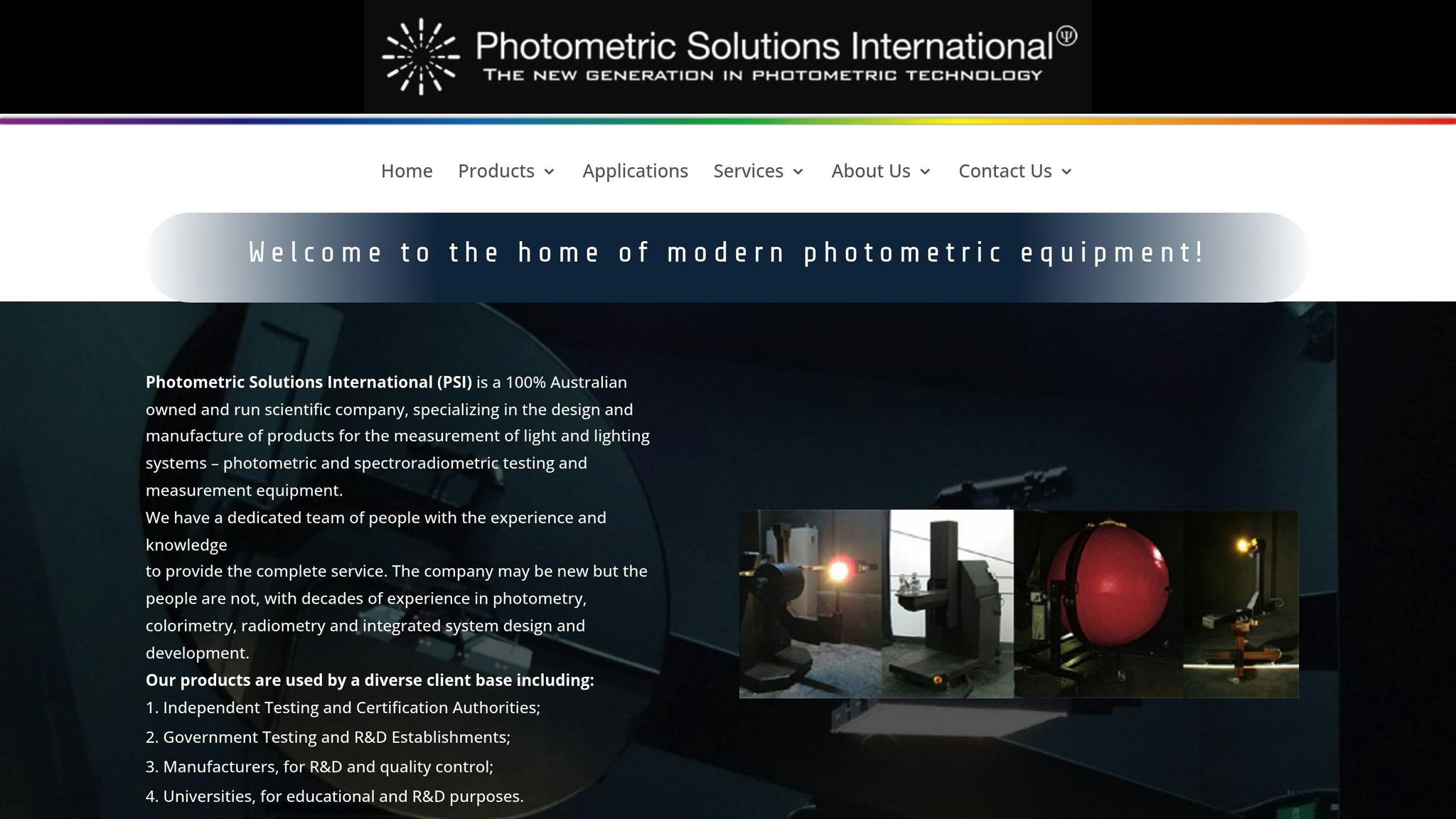Explore essential tools for managing photometric data in smart lighting, optimizing energy efficiency and ensuring compliance in commercial spaces.


Photometric data is essential for designing energy-efficient smart lighting systems in U.S. commercial spaces. It helps optimize light intensity, distribution, and compliance with regulations like California's Title 24. Tools that analyze this data also support energy-saving strategies, reduce light pollution, and integrate with advanced technologies like IoT and AI for real-time lighting adjustments.
Here’s a quick overview of six key tools for managing photometric data:
Each tool has unique strengths, from advanced calculations to smart lighting integration. The right choice depends on your project’s complexity, technical needs, and compliance requirements.


Photometrics Pro is a powerful tool designed for commercial lighting professionals who need to manage and analyze photometric data. It simplifies the often-complex demands of modern commercial spaces by combining advanced data management with professional-grade reporting. Let’s break down its key features.
One standout feature of Photometrics Pro is its Filebuilder Add-in Tool, which lets users create and edit photometric data directly within the platform. This eliminates the need for external tools, making it easier for lighting designers to streamline their workflow. The platform also allows users to efficiently search and organize photometric databases, ensuring that fixture evaluations for warehouses, offices, or industrial environments accurately reflect real-world conditions.
Photometrics Pro is built with the U.S. commercial lighting market in mind, offering detailed reporting for a variety of applications, including indoor, outdoor, roadway, and flood lighting. It aligns with key U.S. lighting standards and building codes, such as California Title 24, ensuring compliance for projects that require regulatory documentation. The tool also provides customizable luminaire reports, making it easy to tailor outputs to specific requirements.
While Photometrics Pro does not directly integrate with smart lighting systems, it supports modern workflows through its Smart Keywords feature. This allows users to embed links to external resources - such as specification sheets or sensor details - directly within photometric reports, maintaining a seamless analysis process.
With its range of features, Photometrics Pro is well-suited for commercial projects, from LED retrofits in warehouses to office lighting upgrades and municipal installations. Its customizable, professional-grade reports provide precise photometric analysis, helping users optimize energy efficiency and clearly demonstrate return on investment (ROI).
Photometric Power Tools is tailored to meet U.S. commercial lighting standards, ensuring precise measurement and reporting for energy code submissions. Its design emphasizes compatibility with U.S. lighting metrics and compliance documentation requirements.
The software operates exclusively with U.S. customary units, incorporating measurements like foot-candles and lumens per square foot. It also features built-in ASHRAE 90.1 templates, which automatically generate the necessary energy code documentation. Additionally, cost analysis outputs are presented in U.S. dollars, aligning with local market conditions.

Viso Light Inspector is a powerful tool designed for photometric analysis in commercial lighting. It provides detailed measurements and visualizations, helping professionals make well-informed decisions. Like similar tools, it improves analysis accuracy while meeting the specific needs of commercial lighting projects.
This software handles complex photometric data from multiple types of fixtures with ease. Users can import IES files, tweak light distribution patterns, and even create custom photometric profiles tailored for specific commercial use cases. Its data visualization engine generates 3D light distribution curves and polar diagrams, offering clear insights into how light spreads in a given space.
The editing features allow users to adjust beam angles, change intensity distributions, and simulate various mounting setups. Throughout these modifications, the software ensures data accuracy and compliance with industry standards. This is especially useful for retrofitting spaces where achieving the right lighting coverage is critical.
Viso Light Inspector is equipped to meet U.S.-specific requirements, using imperial units like foot-candles and lumens per square foot. Cost analysis is presented in U.S. dollars, factoring in local utility rates for more accurate budgeting.
The platform includes built-in compliance templates aligned with IESNA standards and local energy codes commonly applied in American commercial lighting projects. It identifies potential code violations and offers recommendations to fix them, simplifying the approval process for municipal permits or utility rebate applications.
The software integrates seamlessly with major smart lighting platforms using APIs and standard protocols. It can export data in formats compatible with building management systems and supports real-time synchronization with lighting fixtures. This feature allows for continuous monitoring of light output, ensuring that it matches design specifications.
Facility managers benefit from this integration by identifying maintenance needs, reducing energy usage, and maintaining consistent lighting quality across commercial spaces.
The platform includes pre-built templates for common commercial environments such as warehouses, offices, retail spaces, and manufacturing facilities. These templates incorporate industry lighting standards, but users can customize them for more complex scenarios. Advanced modeling options simulate challenges like high ceilings, reflective surfaces, and varying occupancy levels, ensuring lighting solutions meet the specific demands of each task or space.

Photometric Solutions International (PSI) focuses on creating software to manage photometric and spectroradiometric testing equipment used in commercial lighting projects. Based in Australia, the company provides tools designed to handle data collection, user interface operations, and report creation, catering specifically to lighting professionals working on commercial installations. Their emphasis on precision ensures thorough analysis and flexible customization options.
PSI's software is built to handle intricate photometric datasets, enabling users to generate detailed reports, create catalog diagrams, and edit data files that document lighting performance. The platform also allows users to browse intensity distributions and includes integrated lighting design tools to assess how fixtures perform in practical, commercial settings. Additionally, its data acquisition capabilities deliver highly accurate measurements, helping designers make well-informed decisions about lighting solutions.
PSI provides customized options to meet specific project needs, such as advanced data analysis and updates for existing photometric equipment. Their team of experts can assist in developing tailored measurement solutions, which is especially helpful for commercial spaces aiming to upgrade their lighting analysis tools while maintaining their current hardware. These advanced features integrate seamlessly with tools for enhancing photometric performance, making them an excellent resource for smart lighting systems in modern commercial environments.

LEDdynamics provides a specialized platform for photometric analysis, catering specifically to LED lighting in commercial spaces. This system streamlines the process of importing, managing, and analyzing photometric data, making it easier for lighting professionals to create detailed and easy-to-understand reports.
The platform is built with strong data management features and aligns with U.S. lighting standards by supporting widely used file formats and measurement units. It also integrates seamlessly with smart lighting control systems, allowing for real-time performance tracking and adjustments based on data insights.
With its ability to generate customized reports tailored to specific projects, LEDdynamics delivers targeted analytical insights. These features position it as a key component in modern smart lighting setups for commercial applications.

Luminate Lighting Group has developed a specialized approach to photometric integration, combining advanced software capabilities with practical solutions. Their services cater to various spaces, including warehouses, offices, industrial sites, and municipal projects. By blending data management with actionable strategies, they tackle the complexities of modern smart lighting systems.
Luminate's photometric solutions are designed to create precise layouts that ensure optimal fixture placement and light distribution. These layouts rely on detailed data analysis to measure and enhance performance for specific commercial environments.
Their services go beyond basic calculations, offering a thorough analysis of current lighting conditions through energy audit services. This ensures that every project is tailored to deliver measurable improvements in efficiency and effectiveness.
All photometric integration work aligns with U.S. energy code requirements. From ASHRAE standards to local municipal codes, Luminate ensures compliance with all applicable regulations.
Their expertise also extends to rebate eligibility requirements. Photometric data is meticulously documented to support utility incentive applications, including detailed records of energy savings and lighting performance improvements formatted to meet utility company guidelines. Additionally, their solutions are structured to meet 179D tax deduction criteria, showcasing compliance with federal energy efficiency standards. This attention to regulatory detail ensures a smooth integration process for smart lighting systems.
Luminate's solutions are built to work seamlessly with smart lighting controls, enabling real-time performance monitoring and adjustments. Facility managers can compare actual lighting performance with initial photometric projections, making informed changes to enhance energy efficiency.
With features like automated reporting and ongoing analysis, the system identifies opportunities for further optimization. This ensures that lighting systems not only meet but continue to exceed performance expectations over time.
Luminate's approach emphasizes customization, tailoring photometric solutions to the unique needs of different industries. For instance, warehouses benefit from analysis focused on task lighting and safety, while office environments receive solutions aimed at improving visual comfort and productivity.
Their scalable system can be deployed across multiple sites while still allowing for site-specific adjustments. The process includes turnkey design and installation services, managing everything from initial analysis to final commissioning.
Customization doesn’t end there - Luminate’s photometric solutions are designed to accommodate future upgrades and modifications. This ensures that investments in smart lighting remain flexible and aligned with evolving technology and business demands.
Finding the right photometric tool is essential for meeting the specific needs of your commercial project. Below is a comparison of some leading tools, alongside Luminate Lighting Group's integrated solution. This table outlines each option's core features, strengths, and how they can help with compliance and energy efficiency.
| Tool Name | Core Functionality | Supported File Types | Integration Features | Customization Options | Key Benefits |
|---|---|---|---|---|---|
| Photometrics Pro | Performs advanced photometric calculations and lighting analysis | IES, LDT, EULUMDAT, XML | Integrates with CAD software and BIM systems | Custom report templates, project-specific parameters | Offers precise calculations and strong support for regulatory documentation |
| Photometric Power Tools | Handles data conversion and file management | IES, LDT, CIBSE TM14, proprietary formats | Supports Excel export and database connectivity | Batch processing settings, output formatting options | Simplifies data workflows and automates processes for large-scale projects |
| Viso Light Inspector | Focuses on visual photometric data analysis and validation | IES, LDT, EULUMDAT | Connects with smart lighting systems and IoT devices | Customizable dashboards, alert thresholds | Enables real-time monitoring and quick detection of lighting issues |
| Photometric Solutions International Software | Offers comprehensive lighting design and analysis | IES, LDT, manufacturer-specific formats | Links to energy management systems and building automation platforms | Industry-specific templates, calculation methods | Tailored for warehouses, offices, and industrial spaces |
| LEDdynamics Analysis and Software Services | Specializes in LED photometric testing and analysis | IES, LDT, custom LED profiles | Integrates with LED drivers and control systems | Includes spectral analysis and thermal modeling | Maximizes LED performance and improves energy efficiency |
| Luminate Lighting Group Photometric Integration Solutions | Combines photometric integration with expert implementation support | Supports all standard formats and proprietary data | Features smart lighting controls, energy monitoring, and utility rebate system integration | Offers site-specific analysis and multi-location management | Provides turnkey solutions for compliance, rebate optimization, and 179D tax deduction support |
Each tool has its strengths - some excel in processing complex data, while others focus on real-time monitoring. Luminate Lighting Group stands out by combining advanced data management with expert implementation, simplifying compliance and maximizing rebate opportunities.
Selecting the right tool depends on your technical expertise, project complexity, and integration requirements. The right choice will help streamline workflows, reduce energy costs, and make the most of available rebates.
Photometric data tools are playing a key role in transforming smart lighting systems across commercial spaces in the United States. These tools not only help reduce energy consumption but also ensure compliance with regulations and improve overall lighting efficiency. By incorporating precise photometric data into smart lighting setups, facility managers can significantly cut energy costs while achieving optimal lighting conditions.
In addition to energy savings, smart lighting systems backed by reliable photometric data make it easier to qualify for utility rebate programs and 179D tax deductions, helping to offset project expenses. These financial incentives can make upgrading to smarter systems more accessible and cost-effective.
Another critical advantage is performance optimization. With real-time monitoring, potential issues can be identified and resolved before they impact safety or productivity - an essential feature for environments where consistent lighting is non-negotiable. Achieving this level of optimization depends not just on the tools themselves but also on selecting the right ones for your specific needs.
For facilities with in-house engineering teams, advanced calculation software might be a perfect fit. On the other hand, smaller operations may benefit more from integrated solutions that combine data management with hands-on implementation support.
For those looking for a comprehensive approach, Luminate Lighting Group offers photometric integration services that pair advanced data management with expert implementation. Their solutions help maximize energy savings, simplify rebate applications, and meet regulatory standards, making them a strong choice for organizations aiming to streamline their lighting systems.
Choosing the right photometric tools can lead to lower energy costs, easier compliance, and improved system performance - all while supporting broader sustainability efforts.
Photometric data tools are essential for adhering to U.S. lighting standards, including California's Title 24. They provide detailed measurements and analysis of lighting performance, ensuring that designs meet requirements for energy efficiency, light quality, and daylighting controls.
These tools analyze key factors such as light distribution, energy usage, and glare, enabling precise adjustments to achieve compliance. This approach not only maximizes energy savings but also minimizes the chances of violations. By simplifying the certification process, photometric tools help businesses remain in line with regulatory standards.
Integrating photometric data tools with smart lighting systems and IoT technologies offers a range of advantages. One of the most notable is improved energy efficiency. These systems can adjust lighting in real-time based on factors like natural daylight and room occupancy, which helps cut down on energy use and lowers operational expenses.
Another key benefit is enhanced safety and usability. For example, lighting can automatically brighten in areas with high foot traffic or where people are present, creating a safer and more functional environment. On top of that, these technologies streamline both installation and maintenance, making them more budget-friendly in the long run. By optimizing how energy is used and cutting down on waste, these systems also align with sustainability efforts and reduce their impact on the environment.
Facility managers have a powerful ally in photometric data tools when it comes to demonstrating energy efficiency and meeting compliance requirements. These tools generate detailed reports on lighting performance and energy savings, making it easier to qualify for utility rebate programs and 179D tax deductions. They simplify the process by providing the precise data needed to meet required standards.
Using photometric analysis software and energy calculation tools, managers can measure energy savings, verify system upgrades, and confirm eligibility for financial incentives. This not only aligns with sustainability efforts but also helps cut operational costs through rebates and tax advantages.